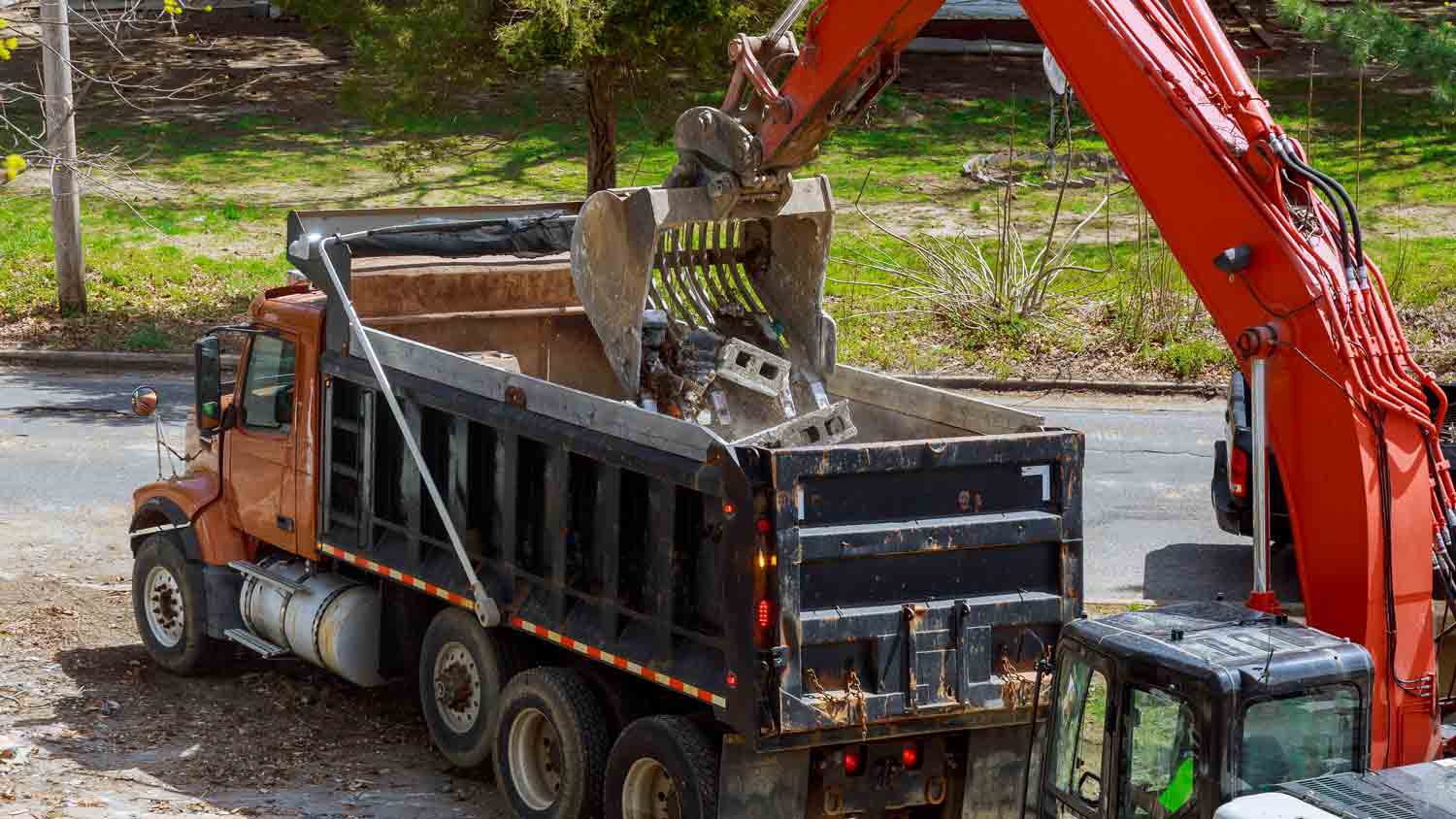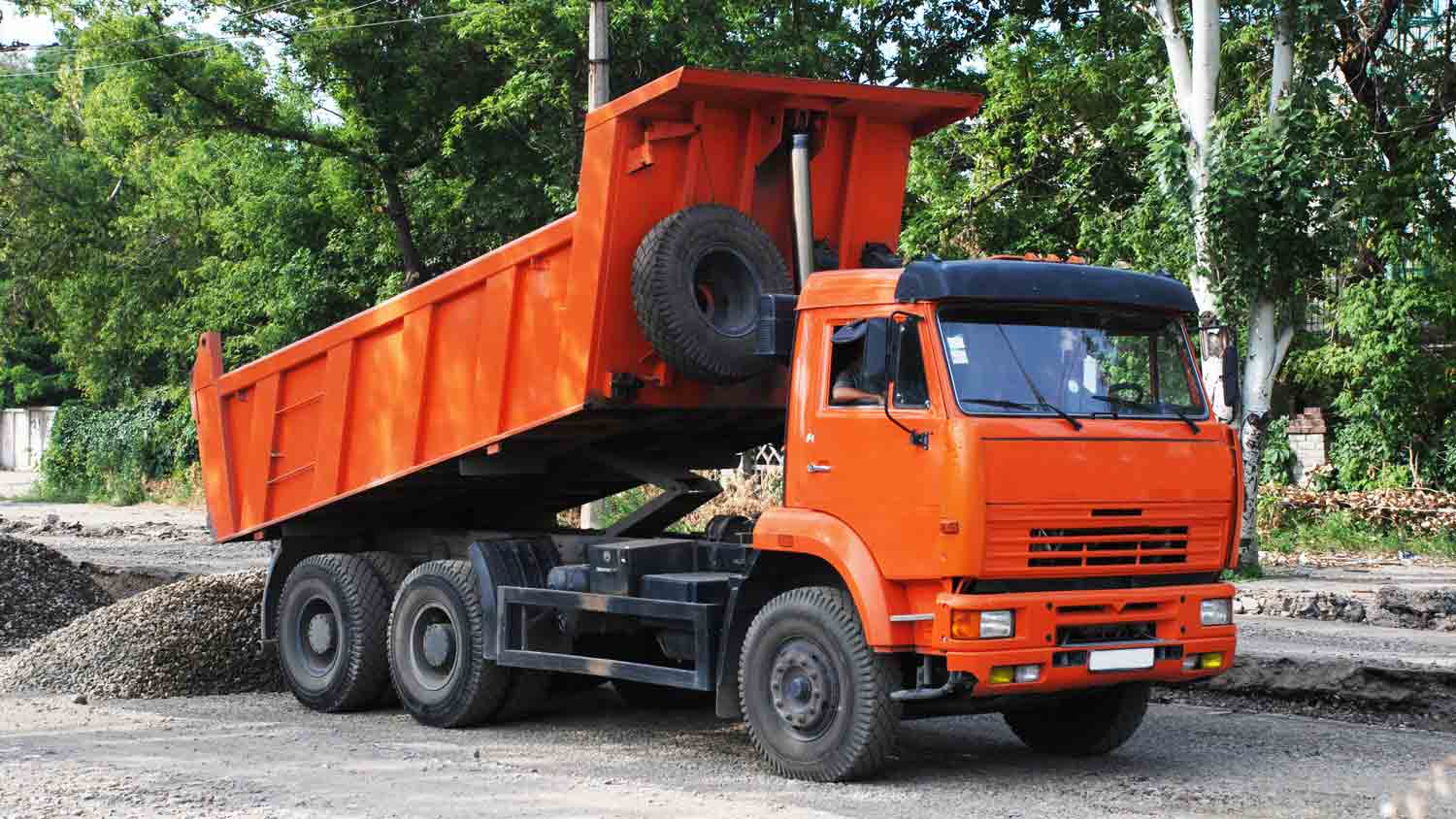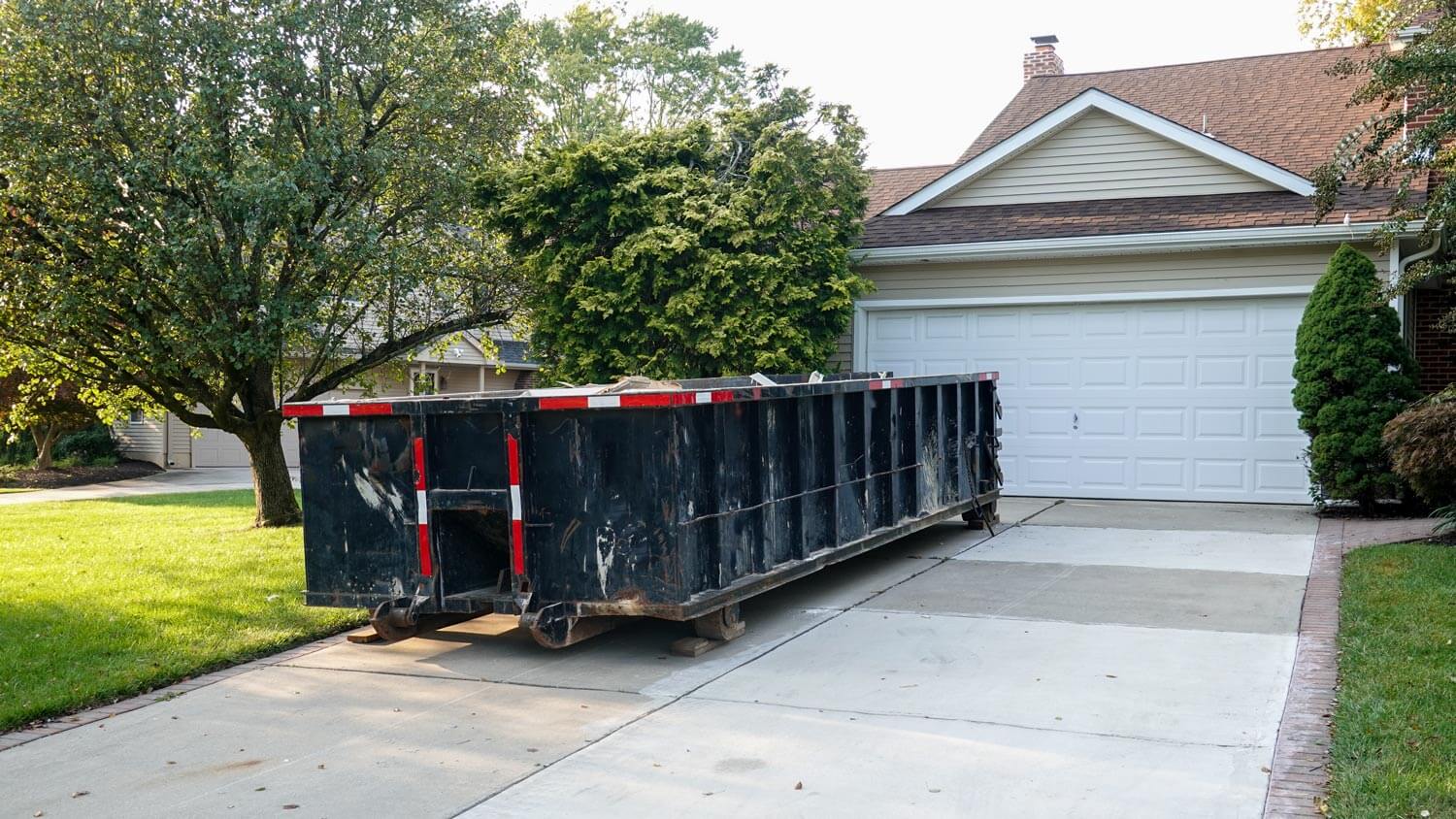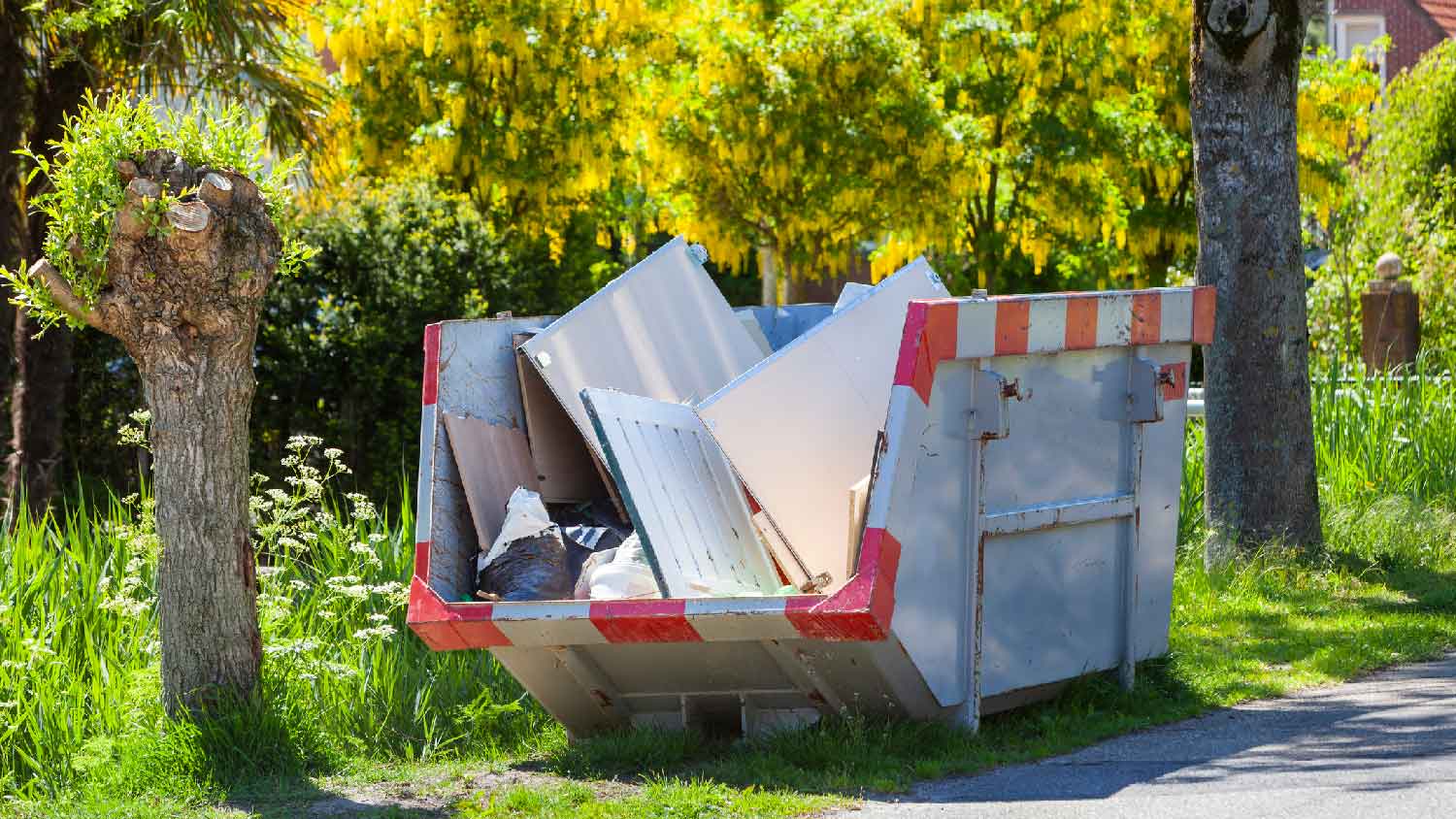Dump Truck Sizes: Choosing the Right One for Junk Hauling
Match your dump truck size to your specific project


The standard dump truck size is 8 1/2 feet wide and 24 1/2 feet long, and it can haul between 10 and 25 yards of debris weighing up to 10 tons.
Small dump trucks can haul around 5 or 6 yards of material weighing 2 1/2 tons, while the biggest dump trucks can haul 40 yards weighing up to 10 tons.
Most dump trucks will require a commercial driver’s license (CDL) to drive, but there are some exceptions.
Whether you're planning a home renovation or you want to DIY the delivery of landscaping material, securing a dump truck for your project might be a good idea. Dump truck sizes range widely, and getting the right size and load capacity is crucial to avoid unnecessary expenses and additional trips.
In this guide, we’ll explain everything you need to know about dump truck sizes to make sure you get the right truck for the job.
What Is the Standard Dump Truck Size?
The standard dump truck has a bed that measures 8 1/2 feet wide by 29 1/2 feet long, weighs just over 26,000 pounds (13 tons) empty, and can haul up to between 10 and 25 yards of debris.
The standard-size dump truck has a load capacity of about 10 tons, which means it has a gross vehicle weight rating (GVWR)—the maximum weight the truck can handle, including the weight of the truck itself, the occupants, and the material you’re moving—of about 46,000 pounds.
You can use the dump truck size chart below to get a sense of other common dump truck sizes.

Dump Truck Size by Weight Limit

If you know the material you’re looking to haul is dense, chances are you’ll be more limited by the weight rather than the space it takes up. Examples include dirt, mulch, sand, rocks, other landscaping materials, and broken-up concrete. In these cases, you might want to choose your dump truck size based on how much weight it can safely haul.
The chart below includes standard dump truck sizes based on the maximum load each can carry.
| Max. Load (lbs.) | Min. Dimensions (ft.) |
|---|---|
| 4,000 | 8 x 20 |
| 5,000 | 8 1/2 x 22 |
| 8,000 | 8 1/2 x 22 |
| 10,000 | 8 1/2 x 24 1/2 |
| 16,000 | 8 1/2 x 23 |
| 20,000 | 8 1/2 x 24 1/2 |
Dump Truck Size by Capacity
If you’re not dealing with particularly heavy materials and instead think you’ll be limited by the space your debris takes up, then you should consider choosing your dump truck size based on the capacity you need, often expressed in yards. This really refers to cubic yards, with one cubic yard measuring around 3 feet by 3 feet.
The table below includes a look at the capacity limit for different dump truck sizes. It’s a good idea to get an estimate for the size you need by contacting a local dumpster rental company or debris removal company if you’re unsure. Once you know what size dumpster you need, you can use that information to get the right size dump truck as an alternative.
| Max. Capacity (yds.) | Min. Dimensions (ft.) |
|---|---|
| 5 | 8 x 20 |
| 10 | 8 1/2 x 22 |
| 15 | 8 1/2 x 22 |
| 20 | 8 1/2 x 23 |
| 25 | 8 1/2 x 24 1/2 |
| 30 | 9 x 29 |
| 35 | 9 x 29 |
| 40 | 9 x 29 |
Dump Truck Size by License Requirements

Most dump trucks require a commercial driver’s license (CDL) to operate legally, so generally speaking, you’ll need to hire a professional if you need a dump truck for your project.
However, there are some exceptions for smaller dump trucks, as the CDL requirement only applies to certain situations. You’ll need a professional with a CDL to operate a dump truck if any of the following apply:
The weight of the truck, occupants, and contents totals more than 26,000 pounds. Since the lightest dump truck weighs around 20,000 pounds empty, this stipulation will apply to most large projects.
Your dump truck will contain any hazardous material. Make sure you understand what counts as hazardous material and what you can place in a dumpster or dump truck before attempting to operate a truck yourself.
The dump truck will tow a trailer exceeding 10,000 pounds. This number can vary based on local regulations.
All of that is to say that, in some cases, you can rent and drive a dump truck yourself. However, it’s usually only legal without a CDL if you’re using a small dump truck with a light load and aren’t transporting any hazardous material.
How to Measure the Right Size Dump Truck
Getting the right size dump truck for your project is important because it will save you time, money, or both. If your dump truck is too small for the job, you’ll pay for longer rental times or additional trip fees if you’re hiring a professional who hauls junk away. A dump truck that’s too small will also cause your project to take longer.
Getting a dump truck that’s too large for your needs won’t delay your project in most cases, but you’ll likely pay more to rent or hire a larger dump truck, so you’ll be wasting money.
You can estimate what your total load will weigh and how much space you think it will take up, and then use the charts above to find the right size for your project. However, it’s often a better idea to rely on a professional to decide what dump truck size you need.
They will often be able to get better estimates for the size you need, and the estimate is often included for free if you’re hiring a professional junk removal company.
Factors that Influence the Dump Truck Size You Need
There are a few things that you need to consider when deciding what size dump truck you need for your project.
Capacity
The first thing you’ll want to consider is the capacity of the materials you want to haul to or from your job site. Dump truck capacity measurements are in yards, which refers to the number of cubic yards that can fit safely inside the bed of the dump truck. Capacity is usually the limiting factor if you’re moving less dense materials, like construction or demolition debris.
Most dump trucks have capacities that fall between 5 and 40 yards.
Weight Limit
All dump trucks also have a weight limit, expressed in pounds or tons, that tells you the maximum weight of the load you can place inside the bed. Keep in mind that this doesn’t include the weight of the truck itself, which you would need to consider when calculating the truck’s GVWR. Materials like sand, dirt, gravel, and concrete are more likely to hit the weight limit before reaching the maximum capacity.
Most dump trucks have weight limits that sit between 4,000 and 20,000 pounds or between two and 10 tons.
Maneuverability
Finally, the layout of your job site might affect what size dump truck you can realistically use. You might need to consider the physical dimensions of the truck—including the width, length, and dump height—as they relate to the following factors on-site:
Gate clearances for rear-yard deliveries that might not allow the truck to pass through
Height clearances that might prevent the truck bed from extending all the way upward to dump your material
The length of the truck and how easily you’ll be able to turn around corners or maneuver around obstacles on your property















